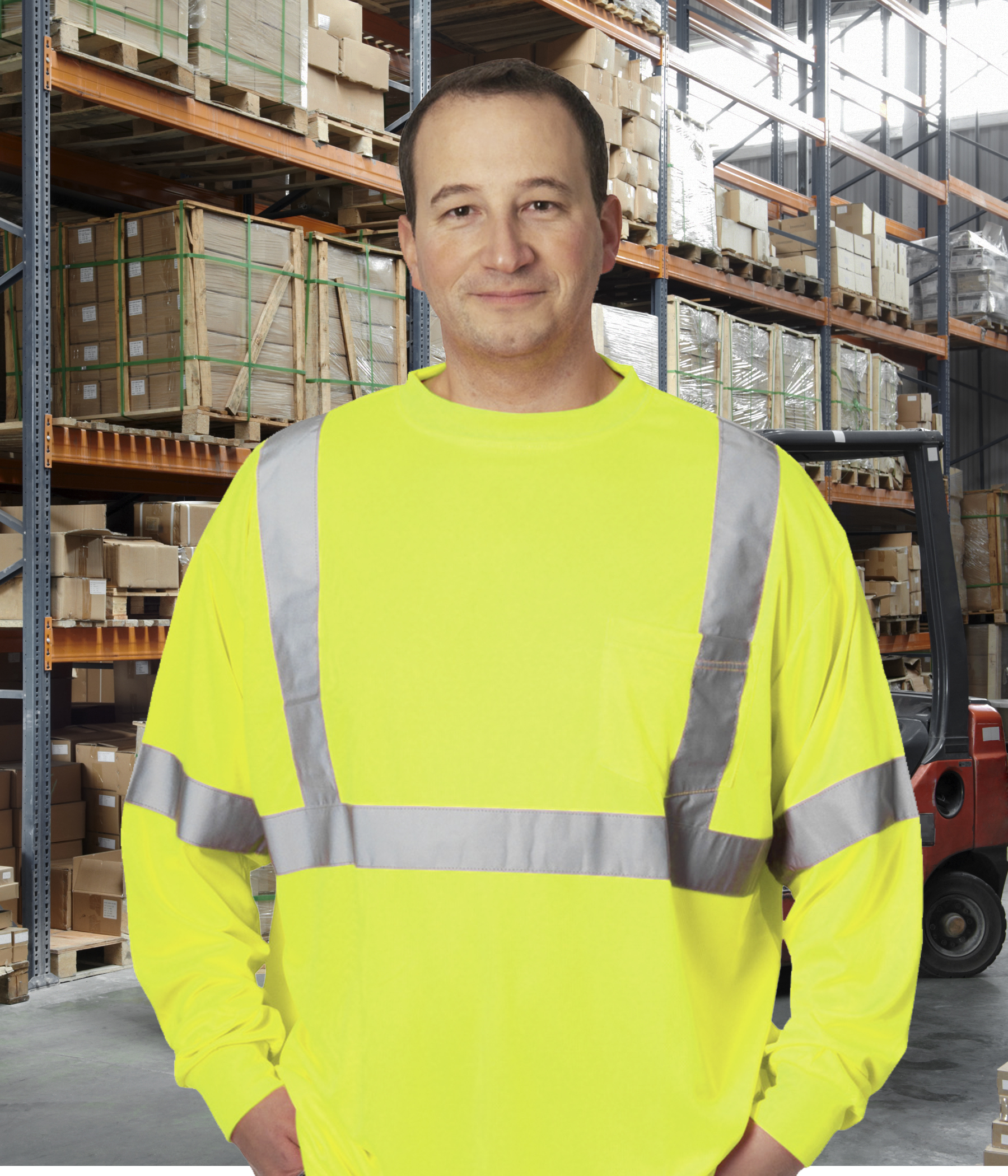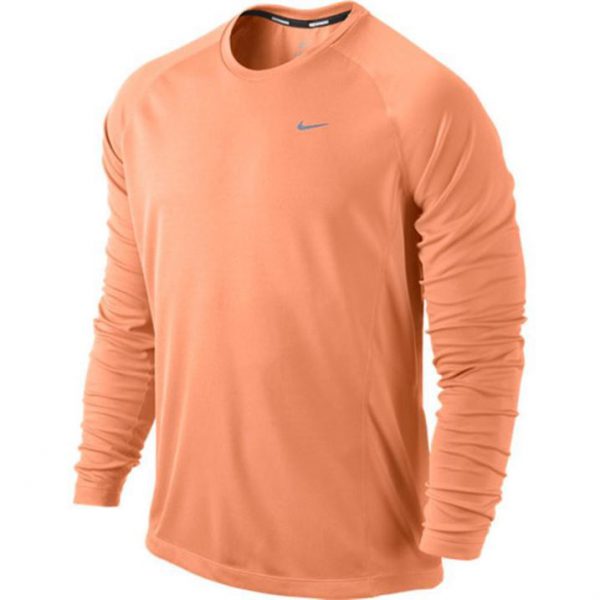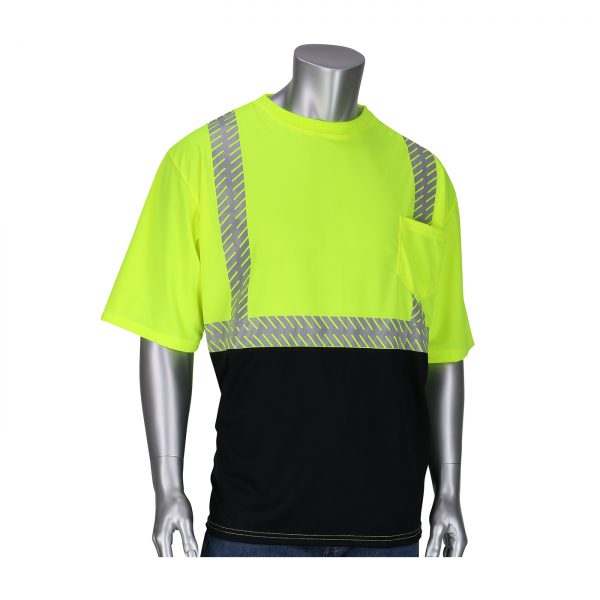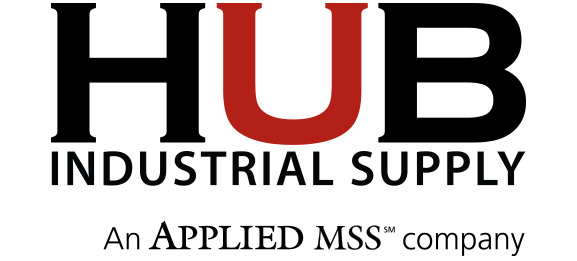
06 Feb Hi-Vis Clothing Comfort Advances
Improvements in clothing find their way into safety workwear… eventually
I recently participated in a sporting competition. There was an entry fee and, as is so often the case, each participant could look forward to receiving a commemorative t- shirt as a memento of the event.
I don’t know about you, but the last thing I need is another poorly constructed free t-shirt, festooned with a big graphic logo of the competition on the chest and contaminated with a motley assortment of sponsor’s logos underneath and on the back.
Imagine what a pleasant surprise I had at the end of tournament day when I reached into my goody bag and drew out a silky, stretchy t-shirt with tasteful screen printing that gave homage to the event without any collateral logos of any sponsors. This was no ordinary giveaway shirt; this was a quality sweat-wicking garment that promptly got thrown in my gym bag and has been worn to many workouts and pickup games.
The
Transformation of Workout Clothing
This
shirt, as well as a handful of other store-bought cousins that have been lately
populating my gym clothes drawer, is made of some kind of polyester/spandex
weave, and it represents a new generation of hot-weather clothing that ventilates
and wicks perspiration better than anything that came before it.

These are the kind of shirts that up until now have been sold with trade names like Dri-FIT, ThreadBorne™, Climalite®, etc. by big name sportswear companies. The fact that they are now appearing in goody bags as freebie t-shirts in sports competitions makes me wonder how long it will be before we start seeing this type of material incorporated into Class 2 and 3 shirts for use in industry.
According to Bob Gates, apparel product manager for Protective Industrial Products, Inc., that day is fast approaching. The polyester birdseye mesh that has been the mainstay of hi-vis shirts for so long has many strong points. It’s durable, holds up under repeated washings without fading, and allows ventilation through its network of pinholes. Yet, it doesn’t have that silky feel and it is prone to snags.
Going
Beyond Birdseye Mesh
There
are two factors that account for the reason why work apparel always is the last
one to the fashion party, Gates says. The first one is the effort required to
get new fabrics to conform to safety standards. “Getting new material to dye
correctly is not always easy,” Gates said. “Hi-vis clothing has to retain a
minimum level of chromaticity (the day-glow brightness that makes it hi-vis) even
after repeated washings, or it’s not going to comply with an ANSI class 2 or 3
rating.”
The second factor is cost. There are a lot of refinements being introduced to the hi-vis garment market that improve worker comfort right now, and it remains to be seen how much employers will pay to enhance the comfort of their team. When it comes to sports and leisure, there’s never any question that the public will be willing to pay top dollar to get their hands on the latest innovation, especially if it comes with the right kind of graphic stripe or swoosh.
But
Will Employers Pay?
When
it comes to workwear, the decision to spend more is made without the added
freight of emotions. Managers are more likely to do a cost/benefit analysis
along the lines of… “will I get enough extra productivity from my crew if I buy
this shirt that is 20% more expensive?”
Unless the shirt will last 20% longer before it needs to be replaced, I don’t think there’s many shirts that could deliver a measurable cost benefit in the short run. However, this simplistic cost/benefit analysis leaves out a lot of important intangibles. The more expensive shirt might turn out to be a smarter buy if it makes the employee feel more valued. When you boost the morale of your team by outfitting them with garments and equipment that they are proud to wear, they tend to stay employed longer and have fewer accidents. Both of those outcomes are money savers.
What the Well-Dressed Worker is Wearing

Black Collars, Cuffs, and Bellies
There’s still enough hi-vis material on these garments to qualify for a Class 2 and 3 rating, but adding black to strategic areas keeps the garment from looking soiled and dingy even after a full day in close contact with other people’s garbage.
Segmented Reflective Striping
If you’ve ever worn a shirt with sewn-on reflective striping, you will be familiar with the difference in elasticity of the stripes compared to the rest of the shirt. You never quite forget you’ve got stripes on your shirt because the stripes will remind you every time you bend or stretch. Segmented reflective striping is heat-transferred and manages to still pass D.O.T. reflectivity tests while not noticeably interfering with movement. Added bonus: It looks new and edgy.
Built-In UV Protection
Similar to SPF ratings in sunscreen lotions, clothes that offer extended protection from the sun now come with a UPF rating, which stands for Ultraviolet Protection Factor. While SPF measures protection from ultraviolet B (UVB) rays, the UPF rating tells you how much the garment will protect you from both UVB and ultraviolet A. The SPF and UPF numbers both quantify how many hours of sun exposure will equal one hour of unprotected exposure. The shirt in the photo has a UPF of 50, which is excellent.
Infused Insect Repellence
Mosquitos don’t need much of an invitation to bite their victims—sometimes even through their clothing. If you’re wearing birdseye mesh, those same regularly-spaced holes that provide ventilation make insect penetration that much more likely. New pest control technology pioneered for the outdoor/adventure market is beginning to find its way into the work garment industry. Permethrin-enhanced clothing is odorless and remains effective even after up to 70 washings.



No Comments